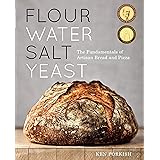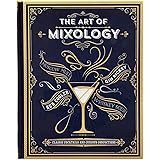For centuries, milk has been a staple in diets around the world, celebrated for its rich flavor and nutritional value. However, raw milk can contain harmful bacteria, posing potential health risks. This historical challenge led to the development of a crucial food safety process.
The video above provides an insightful overview of milk pasteurization, a method that has significantly transformed dairy consumption. It addresses common questions about why milk is treated and the different methods employed by the dairy industry.
What is Pasteurization? A Foundational Food Safety Practice
Pasteurization is a heat treatment process that eliminates pathogenic microorganisms in various perishable beverages. It was developed by Louis Pasteur in the 19th century to prevent spoilage in wine and beer, with its application to milk becoming widespread by the 1920s.
The primary purpose of pasteurization is to enhance food safety and extend product shelf life. It is commonly applied not only to milk but also to juice, beer, and even some types of wine, making these products safer for consumption.
A key outcome of this process is the removal of 99.9% of bacteria from the liquid. This significant reduction drastically lowers the risk of foodborne illnesses, which can be caused by bacteria such as E. coli, Salmonella, and Listeria, often found in raw dairy products. Without pasteurization, the consumption of raw milk carries a greater risk of infection, especially for vulnerable populations.
The Core Principle of Milk Pasteurization
At its heart, milk pasteurization relies on precise temperature and time controls. The heat applied during the process is sufficient to destroy harmful bacteria and enzymes that can cause spoilage. However, care is taken to ensure that the nutritional composition and sensory qualities of the milk are not significantly altered.
The effectiveness of pasteurization is due to its ability to denature proteins and disrupt the cellular structure of microorganisms. This renders them inactive, preventing their reproduction and their ability to cause disease. The subsequent rapid cooling of the milk further inhibits any remaining microbial activity and helps preserve its freshness.
Exploring Different Pasteurization Methods for Dairy
In the dairy industry today, two primary types of pasteurization are extensively used: High Temperature Short Time (HTST) pasteurization and Ultra High Temperature (UHT) pasteurization. Both methods are effective in ensuring the safety of milk, but they differ in their application and the resulting shelf life of the product.
HTST Pasteurization: The Standard for Fresh Dairy
HTST pasteurization, standing for High Temperature Short Time, is the most prevalent method across the dairy industry. This process involves heating raw milk to a required temperature of 161 degrees Fahrenheit.
The milk is held at this temperature for precisely 15 seconds. Following this brief but critical heating period, the milk is then rapidly cooled to 39 degrees Fahrenheit. This rapid cooling step is crucial for stopping the heating process and preserving the milk’s quality.
With HTST pasteurized milk, consumers can typically expect a shelf life of between 16 and 21 days after the pasteurization date. This duration is suitable for products regularly stocked in refrigerators and consumed within a few weeks.
UHT Pasteurization: Extending Freshness and Reach
The other significant method is Ultra High Temperature (UHT) pasteurization. This technique is characterized by its much hotter and faster application compared to HTST. Raw milk is subjected to an even higher temperature, approximately 280 degrees Fahrenheit.
The milk is held at this extreme temperature for an even shorter duration, typically just 2 seconds. Similar to HTST, it is then rapidly chilled back to 39 degrees Fahrenheit. This intense heat treatment effectively sterilizes the milk, eliminating nearly all microorganisms and spores.
The most noticeable difference with UHT milk is its significantly extended shelf life. Products treated with UHT pasteurization can last almost three times longer than HTST milk, typically ranging from 40 to 60 days from the day of production. This extended freshness allows for broader distribution and storage without refrigeration until opened.
Comparing HTST and UHT for Optimal Shelf Life
The choice between HTST and UHT pasteurization largely depends on the desired shelf life and distribution model for the dairy product. Both methods are highly effective in ensuring food safety, but their different temperature and time parameters yield distinct results.
-
Temperature: HTST uses 161°F; UHT uses approximately 280°F.
-
Holding Time: HTST holds for 15 seconds; UHT holds for just 2 seconds.
-
Shelf Life: HTST milk generally lasts 16-21 days; UHT milk can last 40-60 days.
While UHT involves higher temperatures, the shorter exposure time ensures that the milk’s flavor and nutritional integrity are largely preserved. The extended shelf life of UHT milk provides considerable advantages for consumers and producers alike, particularly in terms of reducing food waste and improving accessibility in diverse markets.
Impact of Pasteurization on Milk’s Nutrition and Quality
A common concern among consumers is whether pasteurization diminishes the nutritional benefits of milk. It is important to note that neither HTST nor UHT methods significantly reduce the nutritional value of milk. The essential vitamins and minerals that make milk a valuable part of a balanced diet remain largely intact.
Milk is known for being a rich source of calcium, protein, and vitamin D (when fortified). These critical nutrients are largely heat-stable and are not significantly affected by the pasteurization process. While minor losses of certain heat-sensitive vitamins, such as B vitamins, may occur, these are generally negligible and are often compensated for by a balanced diet.
Furthermore, it should be emphasized that no chemicals are used during the pasteurization process. The method relies solely on heat to achieve its food safety objectives. Concerns regarding potential allergens being created by pasteurization are also unfounded; the process does not introduce new allergenic compounds into the milk.
Why Organic Milk Often Boasts a Longer Shelf Life
Many consumers have noticed that organic milk frequently has a longer shelf life compared to conventional milk. This observation is often met with curiosity, and the reason is quite straightforward: UHT pasteurization is the preferred method of pasteurization in the organic milk industry.
The adoption of UHT processing by organic dairy producers is primarily driven by logistics. Organic milk production often involves smaller farms and broader distribution networks. The longer shelf life afforded by UHT pasteurization allows organic dairy products to be transported greater distances and stored for extended periods, helping to maintain their freshness from the farm to the consumer’s fridge.
This preference enables organic producers to reach more markets and ensures that consumers can enjoy organic milk that remains fresh for a longer duration, aligning with the industry’s commitment to quality and accessibility.
Organic Valley’s Commitment to Quality and Safety Standards
Food safety remains a paramount concern for all reputable dairy producers, including Organic Valley. The commitment to delivering safe and high-quality dairy products is integrated into every step of their production process.
Organic Valley farmers adhere strictly to USDA organic standards, which dictate rigorous requirements for animal welfare, feed, and farming practices. These standards ensure that the milk produced is not only organic but also meets high benchmarks for purity and quality from the very beginning.
Beyond farm-level adherence, every gallon of milk undergoes a comprehensive quality assurance program. It is understood that each batch of milk passes through an impressive 57 quality checkpoints between the farm and its arrival in your refrigerator. These extensive checks are implemented to ensure that every product consistently meets the highest standards for safety, freshness, and organic integrity.











